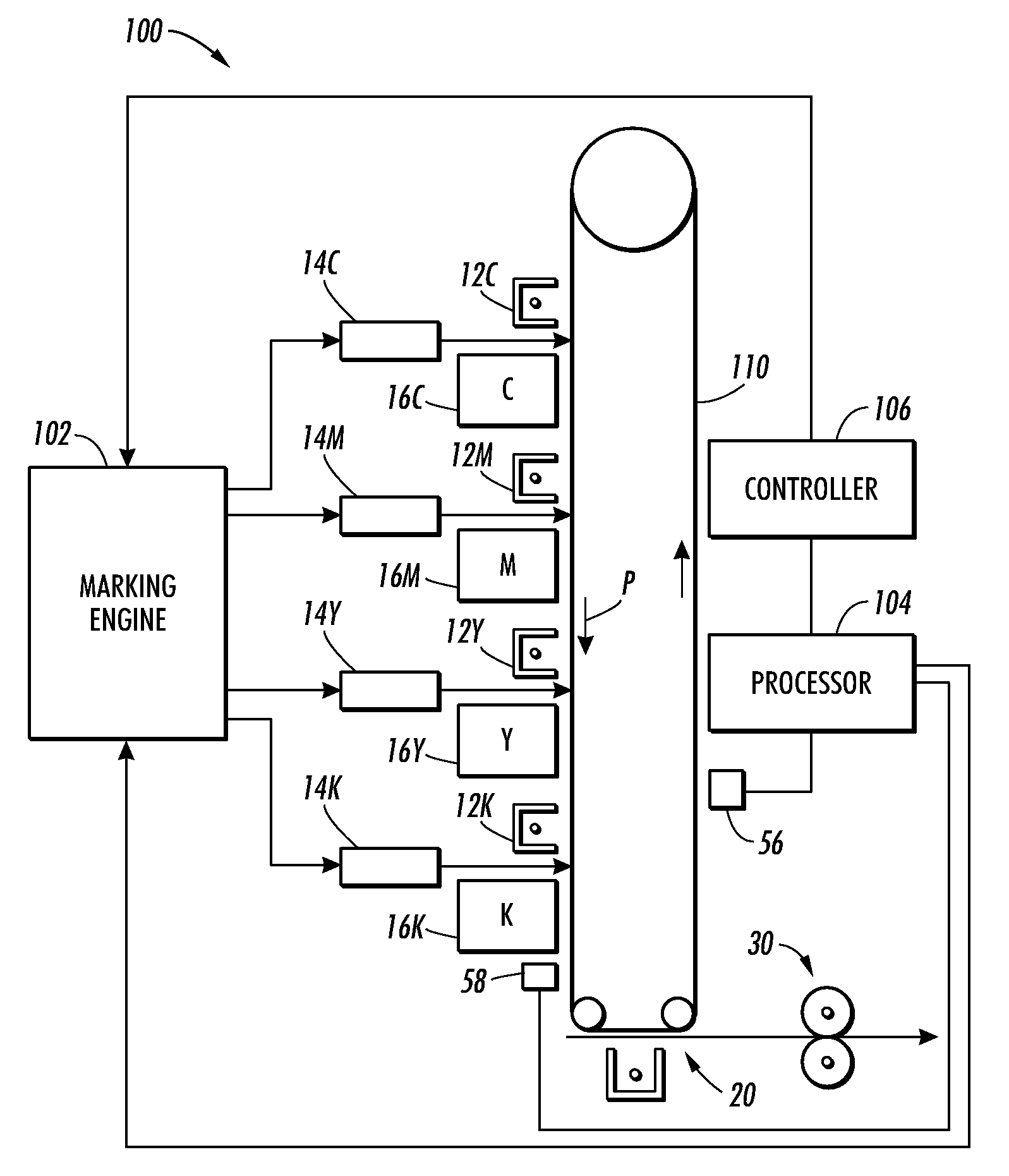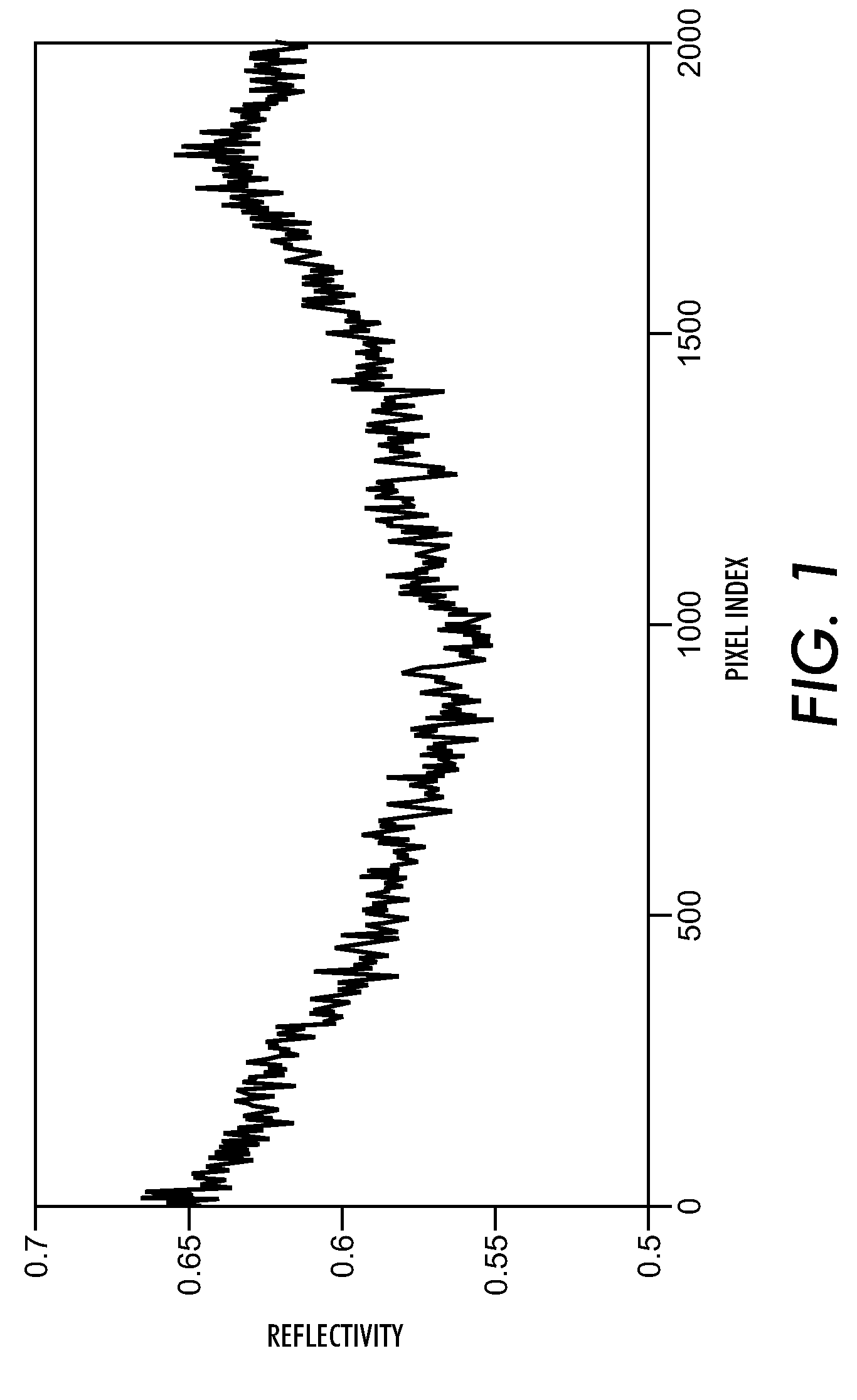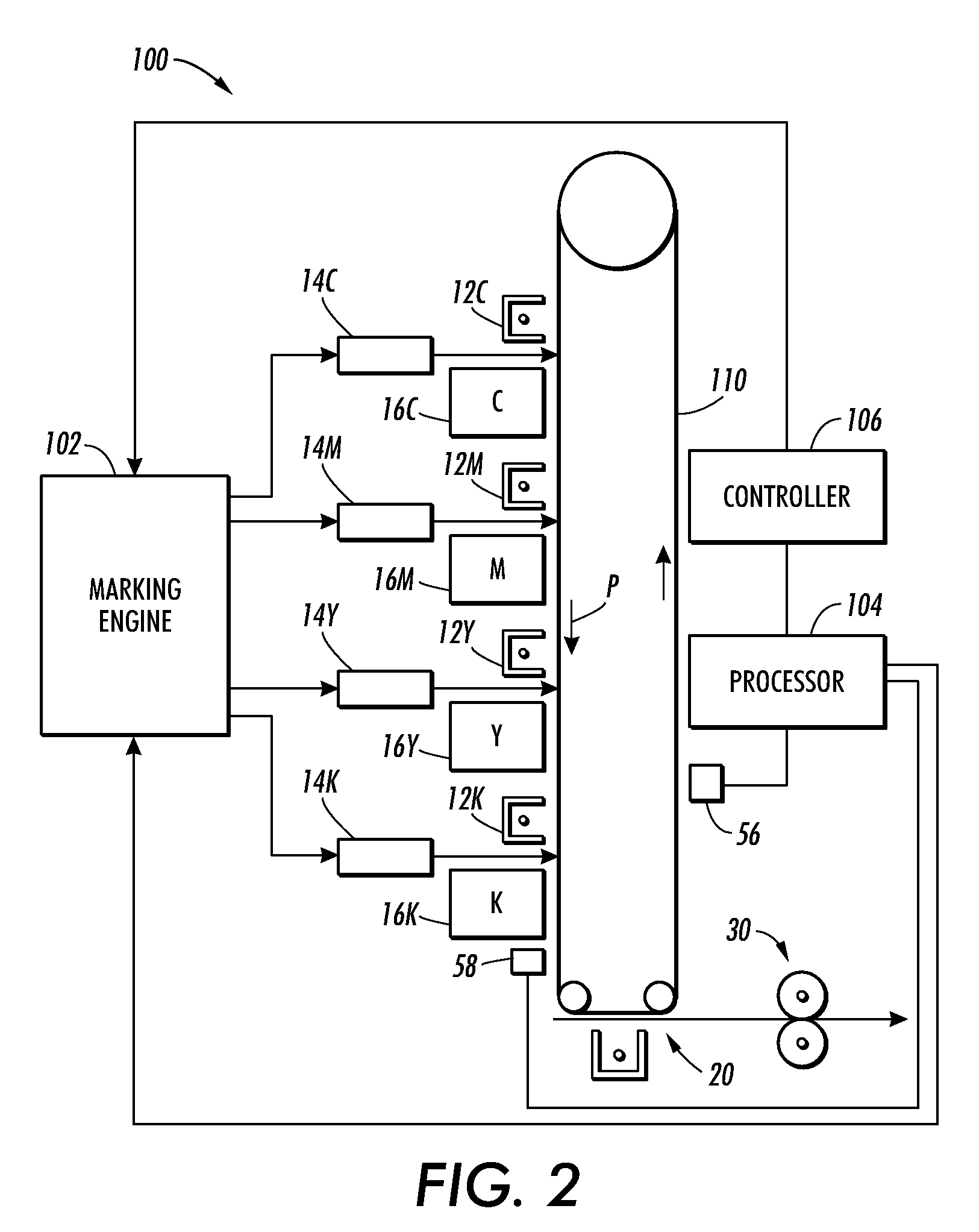Method and system for improved solid area and heavy shadow uniformity in printed documents
a technology of solid area and heavy shadow, applied in the field of minimizing cross-process non-uniformities in solid and heavy shadow regions of printed documents, can solve the problems of large image quality defects, difficult control, undesirable visible color shift of overlaid colors, etc., and achieve the effect of minimizing cross-process non-uniformities
- Summary
- Abstract
- Description
- Claims
- Application Information
AI Technical Summary
Benefits of technology
Problems solved by technology
Method used
Image
Examples
Embodiment Construction
[0039]The present disclosure addresses an issue in the area of uniformity correction, namely, the cross-process uniformities (i.e., streaks) in solids / shadow regions. The present disclosure proposes the use of a higher spatial frequency actuator (i.e., the image based control) in combination with the lower spatial frequency actuators (i.e., the xerographic actuators) to solve this issue (e.g., to improve cross-process uniformities (i.e., streaks) in solid regions including the shadow regions).
[0040]The present disclosure proposes a two-step solution. In the first step, the darkest cross-process area of the solid test patch or image is calculated from the uniformity profile, and the xerographic actuators are adjusted until the entire image is shifted so that the lightest cross-process area in the solid region becomes the darkest level measured in the original uniformity profile. In the second step, the contone (i.e., continuous tone) values of the digital image are adjusted on a pixe...
PUM
 Login to View More
Login to View More Abstract
Description
Claims
Application Information
 Login to View More
Login to View More - R&D
- Intellectual Property
- Life Sciences
- Materials
- Tech Scout
- Unparalleled Data Quality
- Higher Quality Content
- 60% Fewer Hallucinations
Browse by: Latest US Patents, China's latest patents, Technical Efficacy Thesaurus, Application Domain, Technology Topic, Popular Technical Reports.
© 2025 PatSnap. All rights reserved.Legal|Privacy policy|Modern Slavery Act Transparency Statement|Sitemap|About US| Contact US: help@patsnap.com



